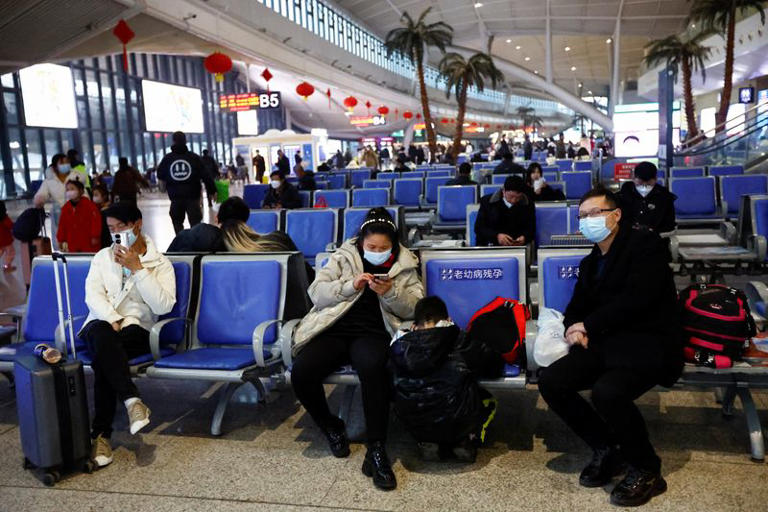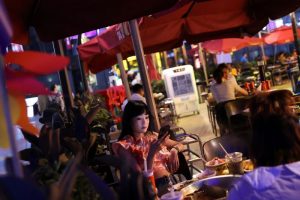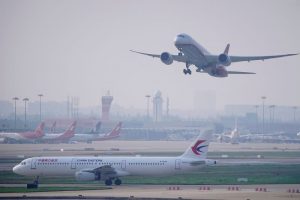China’s tumultuous dismantling of its zero-Covid policy has generated mixed feelings in the country – both positive and negative – by the abrupt turnaround in early December.
Many young people have welcomed the change, given they face less threat from the virus, while others have been rocked by the death of family members.
With Beijing abandoning mass testing and now lacking credible official figures since December 7, global health officials, such as World Health Organisation chief Tedros Ghebreyesus, have been trying to encourage Beijing to be more transparent with details about the crisis that has swamped hospitals and funeral parlours in China’s major cities.
But London-based health analytics group Airfinity said on Friday the Covid death rate in China has now risen to an estimated 11,000 a day – and it expects the daily toll to more than double over the next week or so.
“Airfinity is forecasting Covid-19 infections to reach their first peak in China on the 13th [of] January with 3.7 million cases a day,” it said in its last report, dated December 30, 2022.
“Deaths are estimated to peak 10 days later at approximately 25,000 a day, by that stage a total of 584,000 [in total] since the virus began surging across the country in December. We predict 1.7 million deaths across China by the end of April 2023.”
Airfinity said its model “is based on data from China’s regional provinces, before changes to reporting infections were implemented, combined with case growth rates from other former Covid-zero countries when they lifted restrictions such as Hong Kong and Japan”.
ALSO SEE:
Sovereign Wealth Funds’ Historic Drop Despite Asia Mega-Deals
Young People Happy to be Free
However, the good news is some people in key cities such as Beijing, Shanghai and Wuhan, who endured the cold and this spike in Covid infections, returned to regular activity on Monday. Reuters said that news was a boost to the economy, which experts say could begin to see growth from the second quarter.
Among those who gathered to sled or ice skate on a frozen lake in the capital’s Shichahai Lake Park were some upbeat about the country’s opening-up, to a strategy of living with the virus, similar to the rest of the world.
Borders that had been kept shut for most citizens for past three years, amid the strict regime of lockdowns and relentless testing, are due to reopen on January 8.
“After the end of this lockdown, we don’t have to scan the health code any more, nor do we have to check the travel code,” said one of those in the park, Yang, who gave only one name.
“So we are free now.”
Also at the lake was Zhong, a 22-year-old college student, who said he had stayed home for two or three weeks after getting infected.
“Now I can go out and it’s good timing for the New Year’s Day holiday,” he added. “I want to go around in Beijing, have a look and feel the festive mood.”
Monday was a public holiday, but traffic in the capital has built up again in the last few days as people flock to outdoor sites, although business is still slow in some smaller, confined locations, such as restaurants.
The owner of a Beijing seafood restaurant said patrons had not returned to full strength.
“I expect this situation to linger through the Lunar New Year holiday,” said Chen, who gave only his surname. “I am counting on business to be more normal after the holiday.”
In the central city of Wuhan, where the pandemic began three years ago, people were not as anxious any more, a man surnamed Wu said.
“Work production, life and entertainment are all getting back to normal levels,” added Wu, a tutor at a private training centre.
Lunar New Year
Airfinity said cases in big cities such as Beijing are likely to have peaked already, but it expects “a second peak” to occur in early March, when the Lunar New Year holiday break starts.
With many millions of citizens likely to return to their home villages, the health analytics group expects daily infections to rise further once that happens – to about “4.2 million a day“.
“It is expected that rural areas with be more impacted in this later wave,” it said.
China’s biggest holiday, the Lunar New Year, begins on January 21 this year, when the railway network is expected to carry 5.5 million passengers, state broadcaster CCTV has said.
As expectations for holiday travel grow, authorities at Tibet’s spectacular Potala Palace said it would open for visitors from Tuesday (January 3), after shutting last August due to a Covid outbreak.
Some hotels in the southern tourist resort of Sanya are fully booked for Lunar New Year, media have said.
Reassuring the Public
In recent days state media have sought to reassure the public that the Covid outbreak was under control and nearing its peak.
Infections in the cities of Beijing, Guanzhou, Shanghai and Chongqing are close to ending, news outlet Caixin said on Sunday, citing researchers in the Chinese commercial hub.
But infections will peak in the urban regions of Sichuan, Shaanxi, Gansu and Qinghai in the latter half of January, they added.
More than 80% of those living in southwestern Sichuan have been infected, the province’s Centre for Disease Control and Prevention has said.
On Monday, officials in Beijing announced just a single new Covid death – flat from the previous day – among a national population of 1.4 billion. That, of course, is far from the experience reported when other countries re-opened.
The official death toll of 5,250 since the pandemic began compares with more than 1 million in the United States. Even Hong Kong, a city of 7.4 million, reported more than 11,000 deaths.
China has said it only counts deaths of Covid patients caused by pneumonia and respiratory failure as being related to Covid. The relatively low death count is also inconsistent with rising demand reported by funeral parlours in several cities.
- Jim Pollard with Reuters.
ALSO SEE:
Xi Reassures Public Over Covid Threat as China Sees In 2023
Huawei on Comeback Trail After US Sanctions Blow, Says Chief
China Urged by WHO to Share Real-Time Covid-19 Data
























